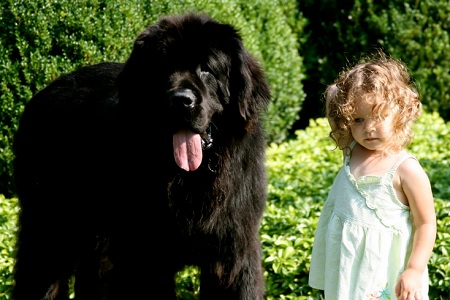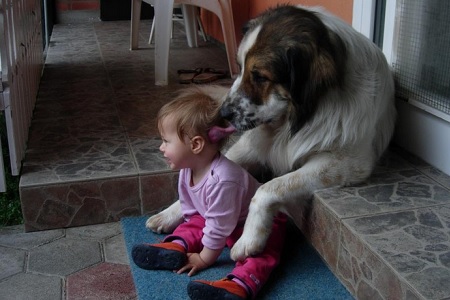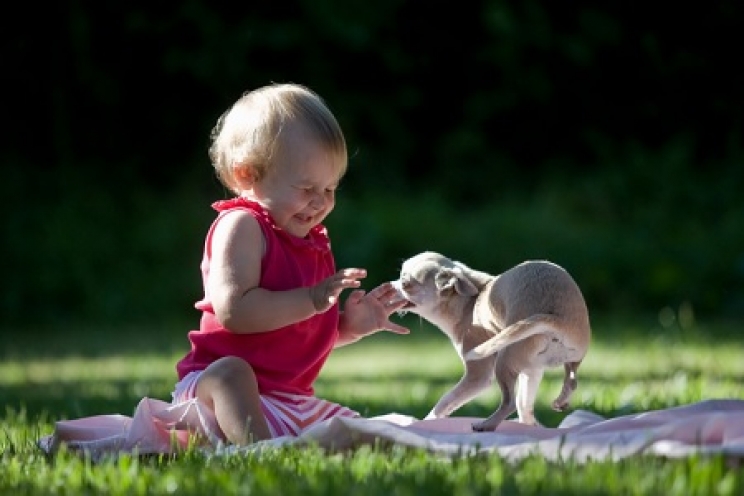How many times have we heard of dogs attacking children? Unfortunately, there can be many causes behind these unpleasant situations, not always due to the personality of the dog, but also, for example, to the poor supervision of parents and their inability to teach children how to behave with dogs and cats. But all this must not make us give up the idea of adopting a puppy, even if we have a very young child at home. The important thing is to follow some tips to consider before and after adoption.
Which dog should I adopt?
There are several false myths about the relationship between children and animals. However, it is not absolutely false that we must give up the idea of adopting a dog if we have a child at home. There are many researches that demonstrate the countless benefits of living with a pet from an early age, to prevent allergies, stimulate the health of the body and even to become sensitive and responsible adults.
In any case, it may be an excellent idea to learn a bit more before adopting a dog, if we have a newborn baby or child at home. In fact, not all dogs are suitable for living with small humans. If a dog is used to a peaceful and silent lifestyle, from one day to the next he would find himself struggling with screams, desperate crying, toy cars at full speed on the floor and too clumsy caresses. A real nightmare!
That's why, before proceeding with the adoption, we should first of all evaluate the set of multiple factors, such as the breed or the starting crosses of the dog, the age, its previous relationship with people, any trauma, but above all the personality, which can derive both from the genetic predisposition and depending on how it lived.
Suitable breeds and not recommended ones
It is certainly always better to adopt a puppy or an adult dog who really needs a home, by contacting a kennel or a specialized association. However, when children are involved, it is often preferred to choose a purebred animal, since it is easier to predict the future size and inclination of the character.

Some dog breeds, in fact, are more suitable for "bearing" the awkward attentions of children. We speak above all of Labrador, Golden Retriever and Border Collie, very affectionate, intelligent and particularly predisposed to listen to the owner, as well as the San Bernardo, which however is more suitable for open spaces. Likewise, the most docile, affectionate and playful breeds, such as the Pug, the Beagle or the Boxer.
On the contrary, overprotective and more attached to the owner breeds, such as the Chihuahua, but also dogs with a greater aggression potential, such as Rottweiler, Pitbull and American Bulldog are not recommended.
Clearly, each of these breeds has a different size, so we will also have to choose based on our available space, but also our free time. A long haired dog will require more care than a shaved haired one. These are all factors to be taken into consideration together with compatibility with children, to avoid being unable to manage the dog after several months of cohabitation.
How important is personality?
In any case, whether it is purebred or half-breed dogs, it is also very important to look after some character aspects. In particular, it must be verified that the animal has fundamental characteristics, such as:
- Wanting to play
- Patience
- Is affectionate
- Low tendency to dominance
- Low territoriality
- Little jealousy towards the property
- Absence of episodes of aggression
All these aspects can be related to both the breed and the experience of the animal, especially if it is a larger puppy or an adult dog. In any case, many incompatible character aspects can be softened by a good educator, in favor of other more suitable traits. That's why we can ask for advice from the veterinarian or an expert educator to help guide us in choosing.
What now?
At this point, you just have to lay the bases for a peaceful and lasting relationship, acting on the education of the child and the dog.

We will have to teach our son that the newcomer is not a toy, but another living being who needs constant respect and care. So you have to explain what to do and what not to do in everyday life, to avoid irritating the dog. Always remember one fundamental thing. If the dog is not aggressive or irritated when the child "tortures" him by playing, it does not mean that he is not bothering him. This situation represents a potential stress factor for the dog, with its consequences.
Therefore, while the animal is sleeping, you will not have to go and disturb him, as well as while eating. By a certain age, it is good that only mom and dad offer the dog the meal, to avoid unpleasant attacks.
As for the dog, however, it may not be a problem if we have adopted a puppy, who will be able to grow together with the child, learning to explore the world day after day. On the contrary, an adult dog may require more attention. If we were to notice some potentially dangerous signs, such as a hint of a snarl or a particularly grim look at the child, we could consult an educator, to prevent possible problems in the future.
The last piece of advice is to constantly supervise the two when they are together, without being too apprehensive. We could pass on our fears to the child, preventing him from living life with his four-legged friend in the right way.










